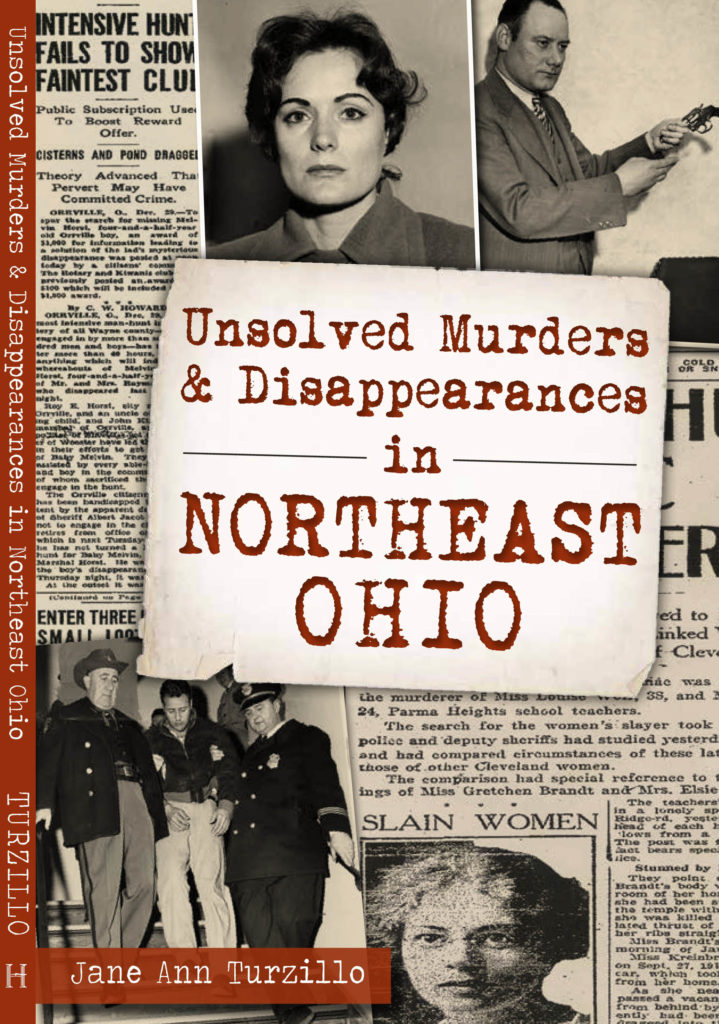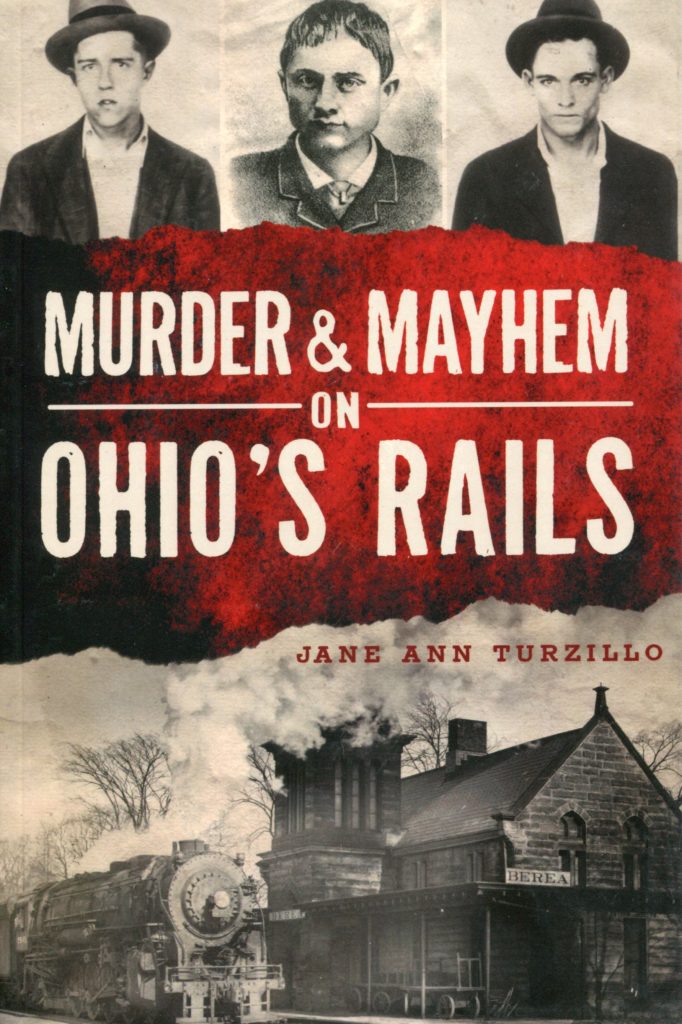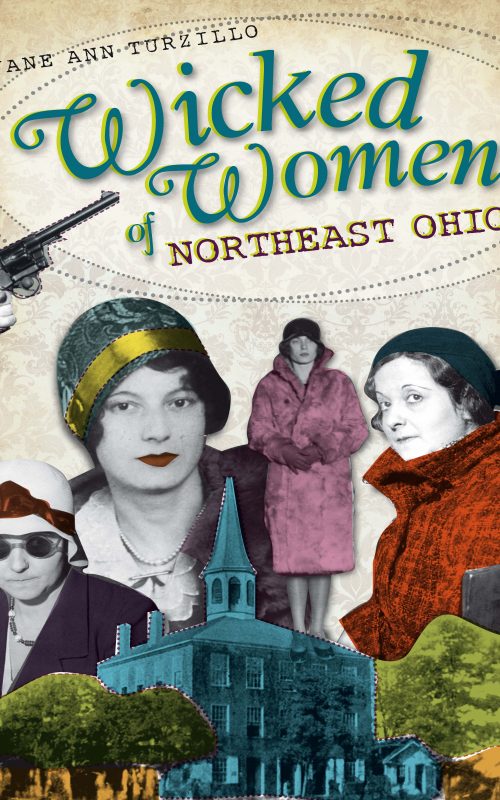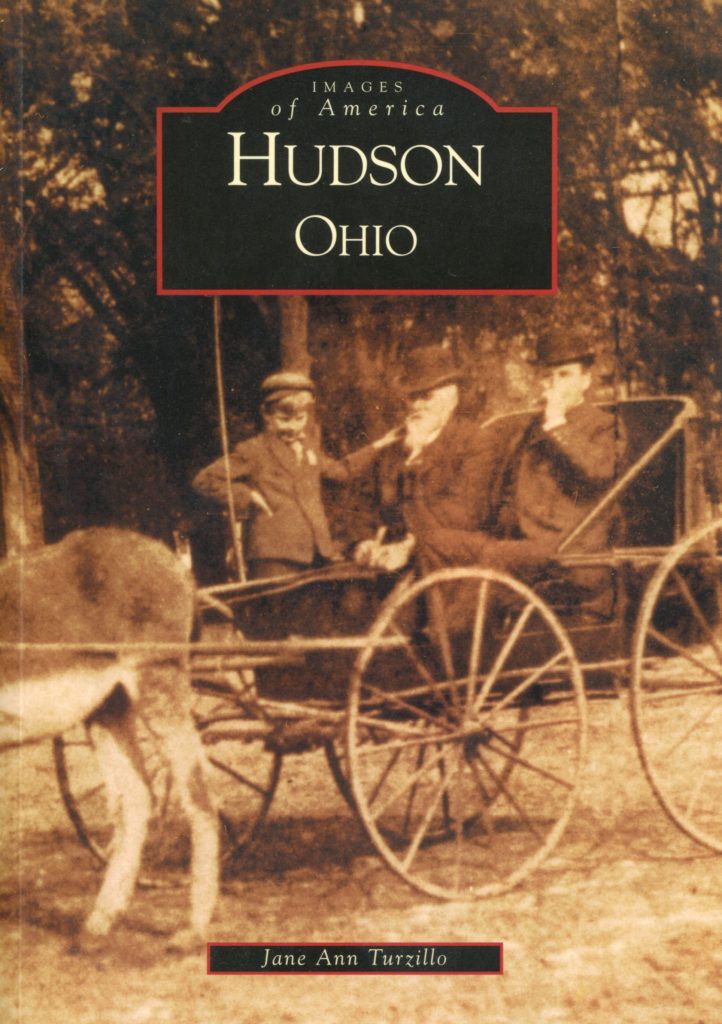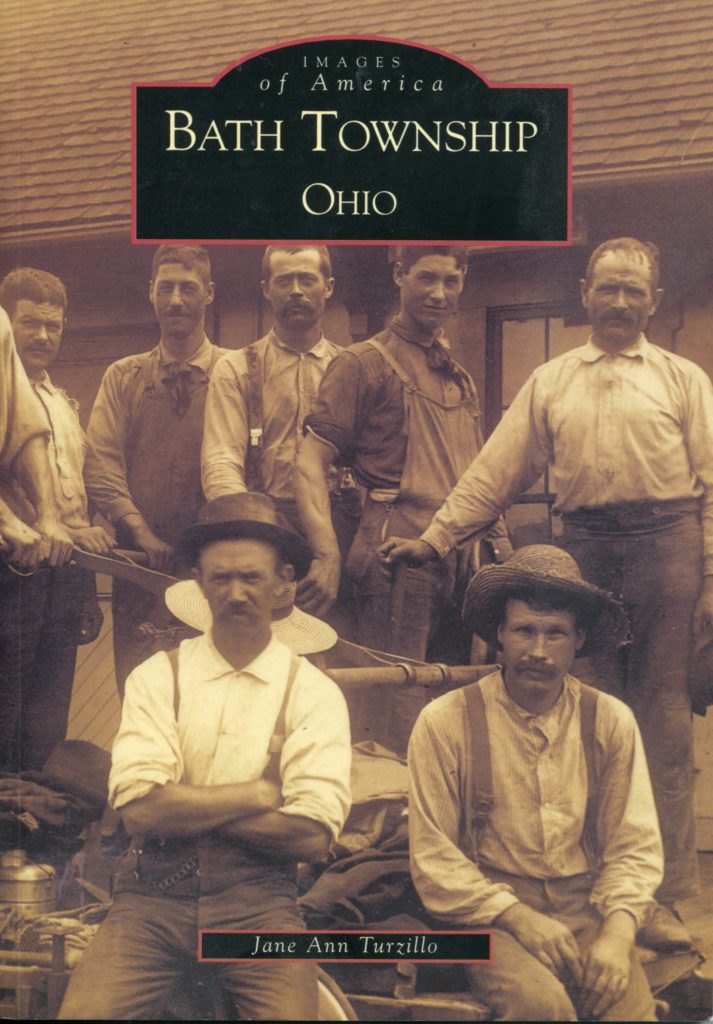HAUNTING COLD CASES
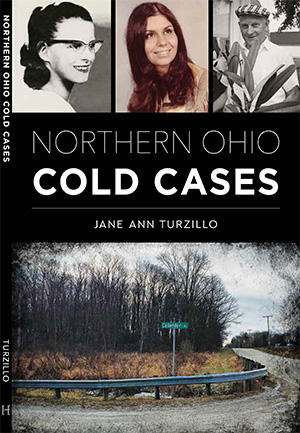
FROM THE HEART OF IT ALL
Northern Ohio is best known for its stunning lake views and bustling cities, but even a region as gorgeous and prosperous as this has seen its measure of tragedy. Judy Martins was a beautiful Kent State University coed who disappeared after a dorm party. Frank Noch was a mathematical genius and valuable employee at the General Motors plant in Cleveland. Someone broke into his home and killed him. Hinckley police chief Mel Wiley had a secret – maybe that is why he disappeared. DNA helped the Sandusky police identify a Jane Doe forty-three years to the day she washed up on the shores of Lake Erie. Now, detectives are hoping to find out who put Patricia Greenwood in the water and wy. Award-winning author Jane Ann Turzillo unfolds these unsolved cases and eight more from the north of the Buckey State.
Wicked Cleveland

Bombs, Brawls and a Burning River!
From world-class museums and popular sports teams to peaceful parks and charming neighborhoods, Cleveland has a lot to offer. But it has a wilder, darker side. Along the one-block passageway called Short Vincent, tourists and celebrities mixed with bookies and mobsters for drinks and dinner, underworld gossip and all kinds of “entertainment.” In 1969, Ted Conrad disappeared with $215,000 in stolen cash. An obituary more than fifty years later finally told authorities where he went. In the wee hours of March 24, 1970, someone slipped up to the front of the Cleveland Museum of Art and planted a bomb on the marble pedestal that supported Rodin’s The Thinker. Who and why remain unknown. Award-winning true crime author Jane Turzillo brings together the strippers, gangsters, robbers, shady politicians and more from Cleveland’s to rough and rowdy past.Ohio Heists

Historic Bank Holdups, Train Robberies, Jewel Stings & More
Ohio history overflows with tales of enterprising thieves. vault teller Ted Conrad walked out of society national bank carrying a paper sack containing a fifth of Canadian Club, a carton of Marlboros and $215,000 cash. He was never seen again.
Known as one of the most successful jewel thieves in the world, Bill Mason stole comedian Phyllis Diller’s precious gems not once, but twice. He also stole $100,000 from the Cleveland mob.
Mild-mannered Kenyon college library employee David Breithaupt walked off with $50,000 worth of rare books and documents from the college.
John Dillinger hit banks all over Ohio, and Alvin Karpis robbed a train in Garrettsville and a mail truck in Warren.
Jane Ann Turzillo writes of these and other notable heists and perpetrators
Wicked Women of Ohio
Feminine wiles and treacherous smiles
The Buckeye State produced its share of wicked women. Tenacious madame Clara Palmer contended with constant police raids during the 1880s and ’90s, only her death could shut the doors of her gilded bordello in Cleveland.
Failed actress Mildred Gillars left for Europe right before World War II. Because she fell in love with the wrong man, she wound up peddling Nazi propaganda on the radio as “Axis Sally.”
Volatile Hester Foster was already doing some time at the Ohio State Penitentiary when she bashed in the head of a fellow inmate with a shovel.
The sinister Anna Marie Hahn does at least five elderly Cincinnati men with arsenic and croton oil and then watched them die in agony while pretending to nurse them back to health.
Award-winning author Jane Ann Turzillo recounts the stories of Ohio’s most notorious vixens, viragoes and villainesses.
Unsolved Murder & Disappearances in Northeast Ohio
This is the most cold-blooded and carefully planned outrage that I have ever had called to my attention.
–Prosecutor Edward C. Stanton, Cleveland Plain Dealer
Cold case files litter the desks of authorities all across Northeast Ohio. Louise Wolf and Mabel Foote, Parma teachers, were on their way home from school one winter evening when a maniac sprang from the bushes and bludgeoned them to death.
When young Melvin Horst went missing on his way home from playing with friends in 1928, many thought he was kidnapped or accidentally killed by a bootlegger’s car.
Charles Collins’s death looked like suicide but was proved otherwise by two preeminent surgeons and has remained a mystery for more than one hundred years.
Author Jane Ann Turzillo recounts eight unsolved murders and two chilling disappearances in Northeast Ohio’s history.
Unsolved Murders & Disappearances in Northeast Ohio was nominated for an Agatha in 2016
Ohio Train Disasters
Tragedy on the Tracks at America’s Crossroads
In nearly a century of heavy rail travel in Ohio, a dozen train accidents stand out as the most horrific. In the bitter cold, just after Christmas 1876, eleven cars plunged seventy-five feet into the frigid water below. The stoves burst into flames, burning to death all who were not killed by the fall.
Fires cut short the lives of forty-three people in the head-on Doodlebug collision in Cuyahoga Falls in 1940 and eleven people in a train wreck near Dresden in 1912.
Author Jane Ann Turzillo unearths these red-hot stories of ill-fated passengers, heroic trainmen and the wrecking crews who faced death and destruction on Ohio’s rails.
Ohio Train Disasters was a National Federation of Press Women’s Contest winner for nonfiction History.
Murder & Mayhem on Ohio's Rails
“Rob every damned man, but don’t hurt the ladies.”
–Opening lines of an 1865 train robbery
Ride Ohio’s rails with some of the bravest trainmen and most vicious killers and robbers to ever roll down the tracks.
The West may have had Jesse James and Burch Cassidy, but Ohio had its own brand of train robbers.
Discover how Alvin Karpis knocked off an Erie Railroad train and escaped with $34,000.
Learn about the first peacetime train holdup that took place in North Bend when thieves derailed the Kate Jackson, robbed its passengers and blew the Adam’s Express safe. Make no mistake–railroading was a dangerous job in bygone days.
Wicked Women of Northeast Ohio
Beyond Catty, these women were vicious.
Wicked Women of Northeast Ohio recounts the misdeeds of ten dark-hearted women who refused to play by the rules. They unleashed their most base impulses using axes, guns, poison, and more.
You’ll meet Perry’s Velma West, a mere slip of a girl who was unfortunately too near a hammer during an argument. New Philadelphia’s Ellen Athey–no lady herself–had a similar problem with an axe. Ardell Quinn, who operated the longest running brothel in Cleveland, would simply argue that she was a good business woman.
Grim? Often. Entertaining? Deliciously so.
Images of America: Hudson Ohio
The history of Hudson began in 1795 when David Hudson and five business partners anted up $12,900 for Township 4 Range 10 of the Connecticut Western Reserve, in what is now Northeast Ohio. On June 26, 1799, after traveling two months through the wilderness, he and his small party landed in the Western Reserve.
The story moves to establishing churches, schools, businesses, and the Western Reserve College, known as the “Yale of the West.” The fiery John Brown and the underground Railroad figure prominently in the history of Hudson. Hudson flourished until a series of misfortunes took their toll. Plans for the Clinton Air Line Railroad collapsed, the college relocated to Cleveland, the fire of 1892 destroyed an entire block of businesses along Main Street, and the only bank in town suddenly closed its doors with people’s life savings. Saddened by the deterioration of his hometown, wealthy coal magnate James W. Ellsworth outlined a plan to restore Hudson as a “model town” and put his vast financial resources at work. Hudson rebounded with a new spirit and has since thrived.
Hudson, Ohio features vintage photographs drawn from the archives of the Hudson Library and Historical Society. Author Jane Ann Turzillo takes the reader from 1799 to 1958 by way of images of the Brown family, polar explorer Lincoln Ellsworth, the Brewster Store, Hudson House, and the Loomis Observatory.
Images of America: Bath Township Ohio
Bath Township was sculpted from the Western reserve after Native Americans ceded the land to the United States at the 1805 Treaty of Fort Industry. Captured here in over 200 vintage photographs is the development of the area into Bath Township, though the trials and triumphs of its earliest settlers.
Originally named Hammondsburgh after one of the first families to settle in the area, Bath Township was formally organized in 1818. Industry sprang up in the form of grist, flour, saw, and woolen mills along the Yellow Creek in Ghent Village. Gradually a handful of small population centers or “corners” came into existence within the township. Names like Hammond’s Corners, Stony Hill, Ghent, and Ira are still used today, while the names of Hurd’s Corners, Little Germany, and Farley’s Corners are seldom spoken. Pictured here are the buggy works, blacksmith shops, cheese factories, general stores, and post offices, and the residents that operated them, creating the inviting area that residents cherish today.
The historic photographs in this book are drawn from the Bath Township Historical Society and private collections owned by descendants of Bath’s fist families. Through these photographs, the reader will meet the pioneers, perhaps ponder their sacrifices, and tour the township’s historic buildings.

